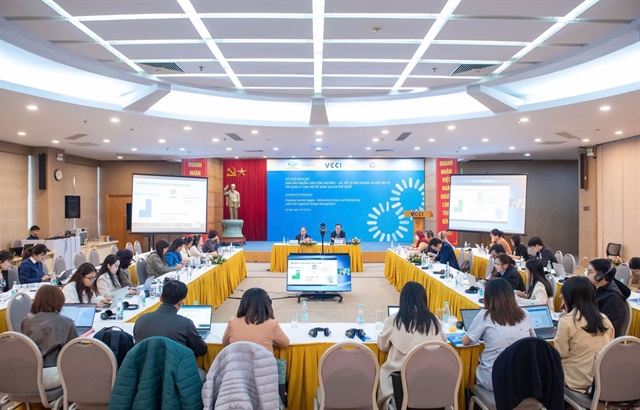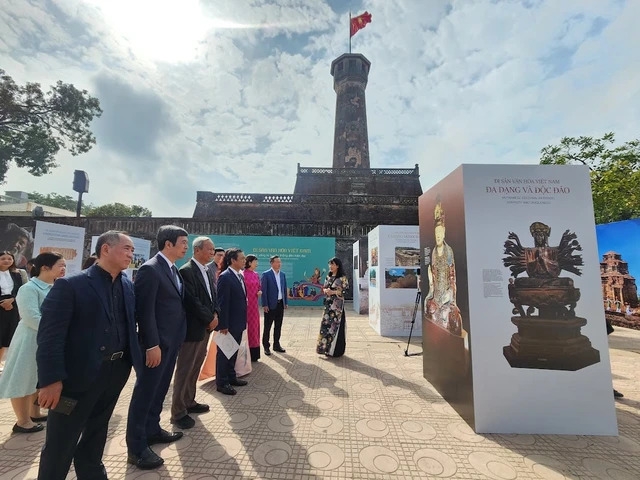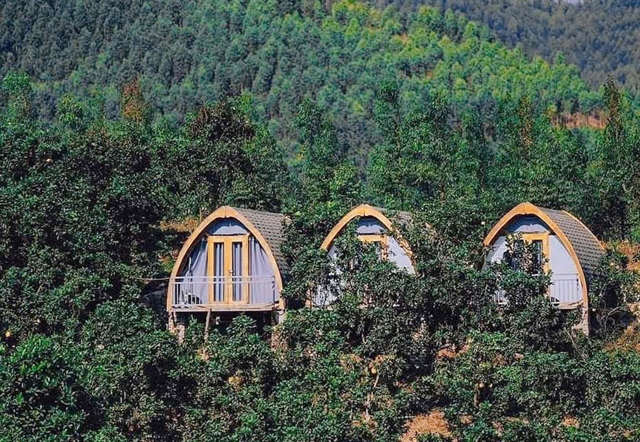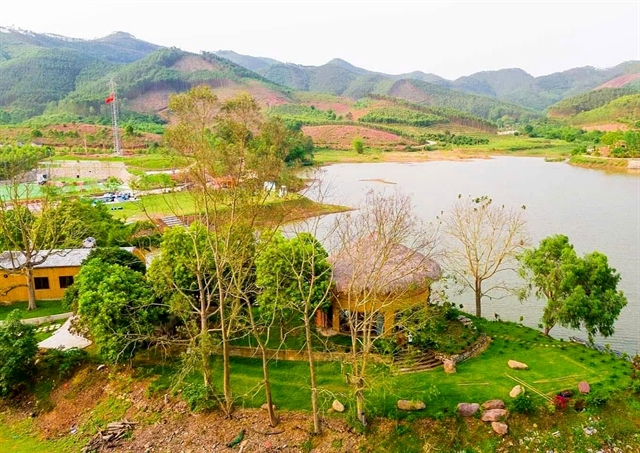 Society
Society

 |
| The Vạn Hoa Hồ Va community eco-tourism site in Đông Phú Commune, Lục Nam District makes effective use of the natural landscape. — Photo courtesy of the Bắc Giang People’s Committee |
BẮC GIANG — Over recent years, Lục Nam District in the northern Bắc Giang Province has clearly identified a new sustainable socio-economic development direction, in which tourism combined with new rural construction, makes the most of local advantages in terms of the natural environment.
This year, Lục Nam will continue to implement many synchronous solutions to promote the strengths of ecological, spiritual and community tourism, while improving the quality of life for rural people.
Exploiting advantages
 |
| Lục Nam District aims to build up to five new-style rural villages associated with eco-tourism and experiences. — Photo courtesy of the Bắc Giang People’s Committee |
Lục Nam has a favourable geographical location, located at the eastern gateway of Bắc Giang Province, bordering Quảng Ninh and Hải Dương.
The district has a rich order of mountains, rivers, lakes and primaeval forests.
It also has many famous landscapes, such as the Khe Rồng hot mineral spring, the Khe Rỗ ancient lim forest in the Tây Yên Tử conservation area, the Đồng Đình Waterfall and the Cấm Sơn Lake.
In particular, Vạn Hoa Hồ Va – a new ecological destination in Đông Phú Commune - is growing as an attractive check-in place for tourists, a winning combination of poetic scenery and charming mountains and rivers.
The area around the lake has been invested in, boasting flower gardens, rest areas, lakeside walkways, along with boating and camping services on weekends.
It is an ideal spot for relaxation, suitable for families and groups of young people who love to explore.
In addition, the system of historical and cultural relics such as Am Vãi Pagoda, Suối Mỡ Temple, Hả Temple, Ba Chẽ Temple, Bát Nhã Pagoda, along with unique folk festivals, attracts a large number of tourists every year.
Making the most of these tourism potentials is being closely linked to the new rural development programme by the district.
Communes and villages with potential tourist attractions are given priority for investment in infrastructure, roads, lighting systems, village cultural houses and medical stations.
The roads leading to tourist attractions are being expanded, creating favourable conditions for the people to develop services and for tourists to visit and experience the area.
One of the highlights in Lục Nam District is elevating rural tourism by promoting community tourism.
Highland communes such as Trường Sơn, Huyền Sơn, Cẩm Lý and Tam Dị are gradually forming homestay models, building ecological garden houses, organising tours to experience farming, tea harvesting, forest trekking and traditional cooking.
Local people directly participate in tourism activities, offering communities some kind of stable income while also allowing them to preserve their unique cultural identity.
The district has coordinated with the province’s professional agencies and travel agencies to hold training courses on developing tourism skills for local people.
At the same time, it has supported preferential loans to renovate houses and develop food and accommodation services.
Local farmers who make specialties such as Kiên Lao wine, Trường Sơn yellow flower tea, Cẩm Lý vermicelli and wild honey, are being encouraged to build the products into full brands and engage more widely in promotion.
Enhancing new-style rural areas quality
Tourism development not only brings economic value, but also motivates localities to improve criteria quality in building new-style rural areas.
The environmental landscape is focused on the natural beauty on offer, with flower roads, murals, trees, cultural houses and sports grounds, all invested synchronously, contributing to changing the countryside appearance.
By 2025, the district strives to have four more communes meeting advanced new rural areas standards, especially the one with tourism development potential.
The district also aims to build from three to five models of new-style rural villages associated with eco-tourism and experiential tourism, and then to replicate those models throughout the district.
To achieve the goal of developing tourism together with sustainable new rural construction, Lục Nam District will continue to conduct synchronous solutions, such as completing the tourism development plan and new rural planning with a vision to 2030.
The authorities are calling on businesses to invest in building small and medium-sized tourist attractions that are environmentally friendly and suitable for rural landscapes.
It will also promote the image of Lục Nam on media and digital platforms, connecting tours with localities inside and outside the province.
The district will push up digital transformation in tourism management, guiding people to use social networks and websites to introduce their products and services.
Moreover, it will build support mechanisms, creating favourable conditions for people to access capital, vocational training and start-ups in rural tourism.
Developing tourism along in tandem with building new rural areas is, all agree, the right direction and suitable for the actual conditions in Lục Nam District.
With drastic participation of the entire political system and the people’s consensus, Lục Nam is gradually forming exemplary rural tourism models, improving people's lives, preserving cultural identity and promoting sustainable socio-economic development. — VNS




